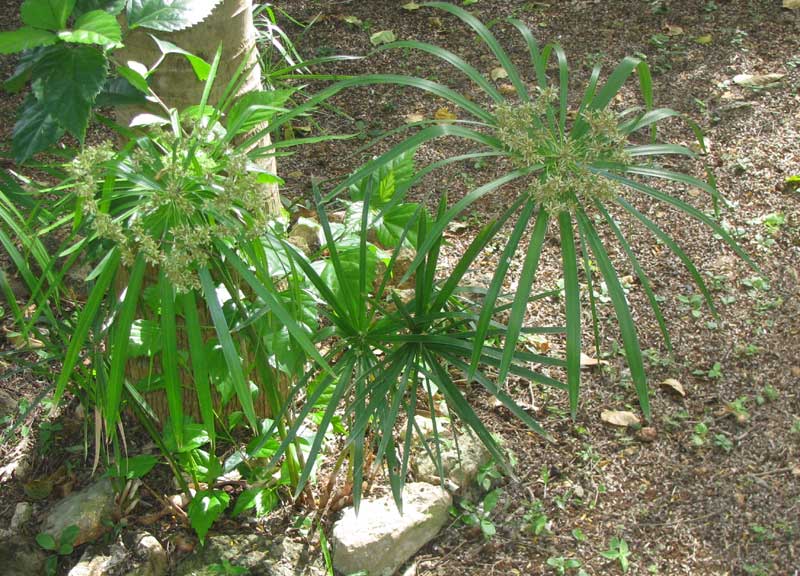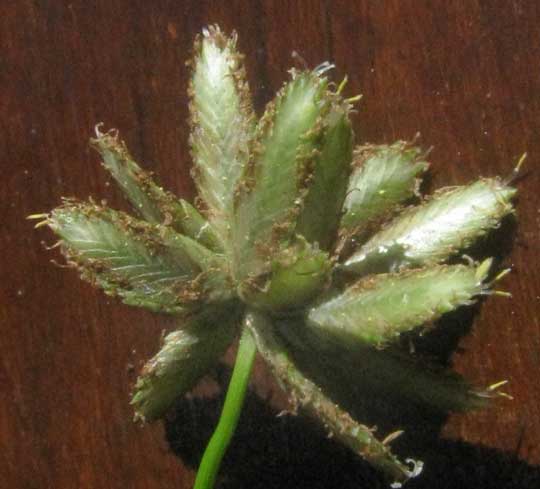Excerpts from Jim Conrad's
Naturalist Newsletter

from the February 26, 2012 Newsletter issued from Hacienda Chichen Resort beside Chichén Itzá Ruins; limestone bedrock; elevation ~39m (~128ft), N20.675°, W88.569°; central Yucatán state, MÉXICO
UMBRELLA PLANT
At the shady base of a Cecropia tree in the Hacienda's garden area you can see the umbrella-shaped plant shown above. About knee-high, the plant's crown of widely spreading leaves arises atop a stiff, slender, leafless, green stem. Nestled in the center of the flaring leaves are hundreds of flattish flower spikelets arranged in spherical heads which themselves are held in a large, diffuse, umbel-like inflorescence. A head is shown below:

In that picture, each flattish spikelet bears about two dozen very small flowers, each flower hidden beneath a scale. The brown, mealy items along each spikelet's sides are the flowers' male stamens and female styles emerging from behind the scales. The stamens release pollen into the air; pollen grains from other plants land on the styles' stigmatic areas and germinate.
The flowers of this plant are arranged in grasslike spikelets but the plant isn't a grass. It's a member of the Sedge Family, the Cyperaceae, which is a big family of about 100 genera and 5000 mostly herbaceous species. The flattish spikelets help us recognize the genus Cyperus, the species of which often are referred to generically as umbrella sedges. Cyperus is a big genus of over 500 mostly tropical and warm-temperate habitats. Our species is commonly grown in tropical and subtropical gardens It's CYPERUS ALTERNIFOLIUS, a native of the swamps of Madagascar.
The most famous member of the genus Cyperus is Papyrus, the plant from which ancient Egyptians made paper, the word paper itself deriving from Papyrus. Papyrus plants grow much larger than our Umbrella Plant, and Papyrus's crown leaves are much fewer and much smaller than the Umbrella Plant's.
Despite Umbrella Plant's swampy origins, it does well in drier spots, in sun or shade. Also, it's easy to reproduce. Just cut off an entire "umbrella" of flower clusters, place it upside-down in shallow water or moist soil, and when new plants emerge in a few weeks, transplant them.